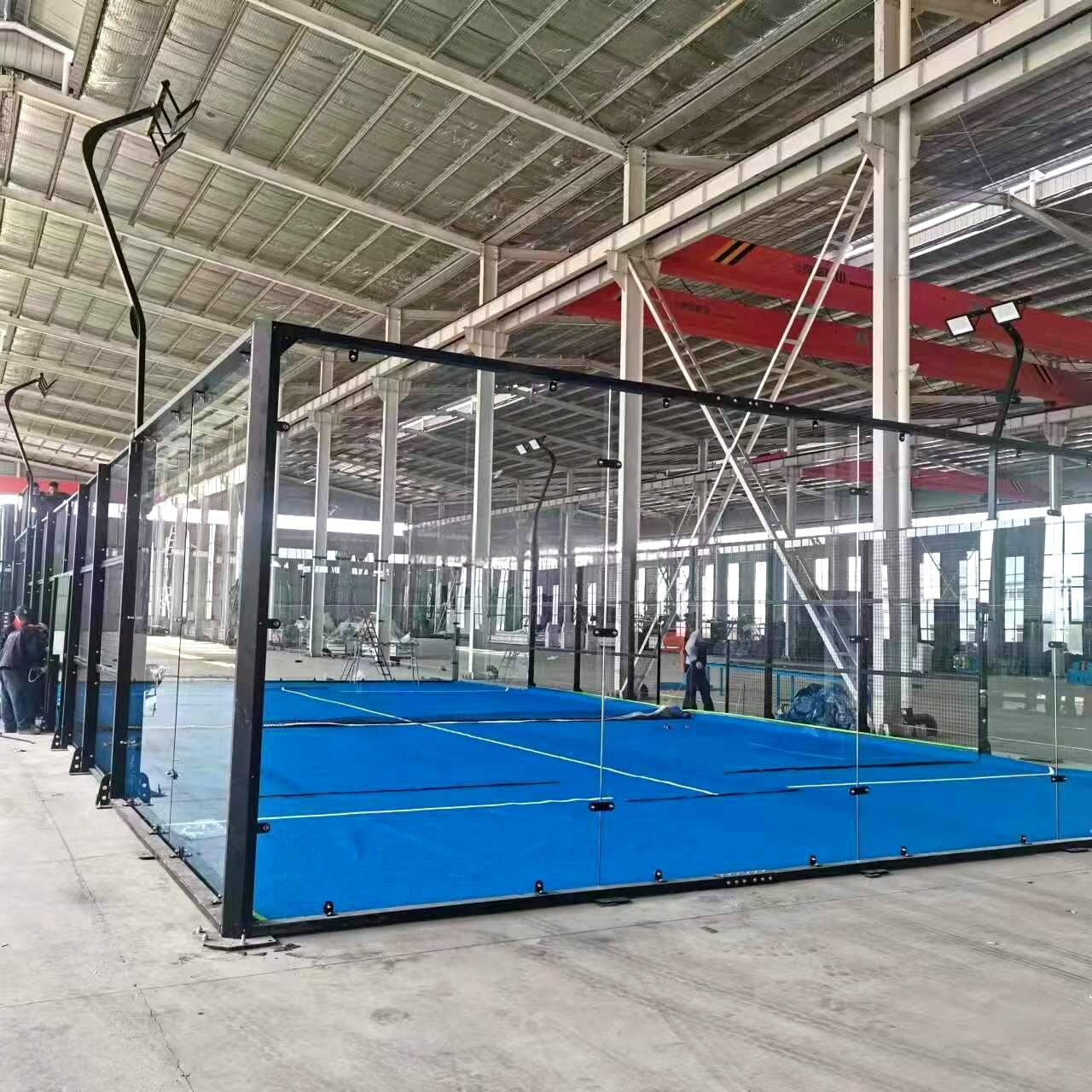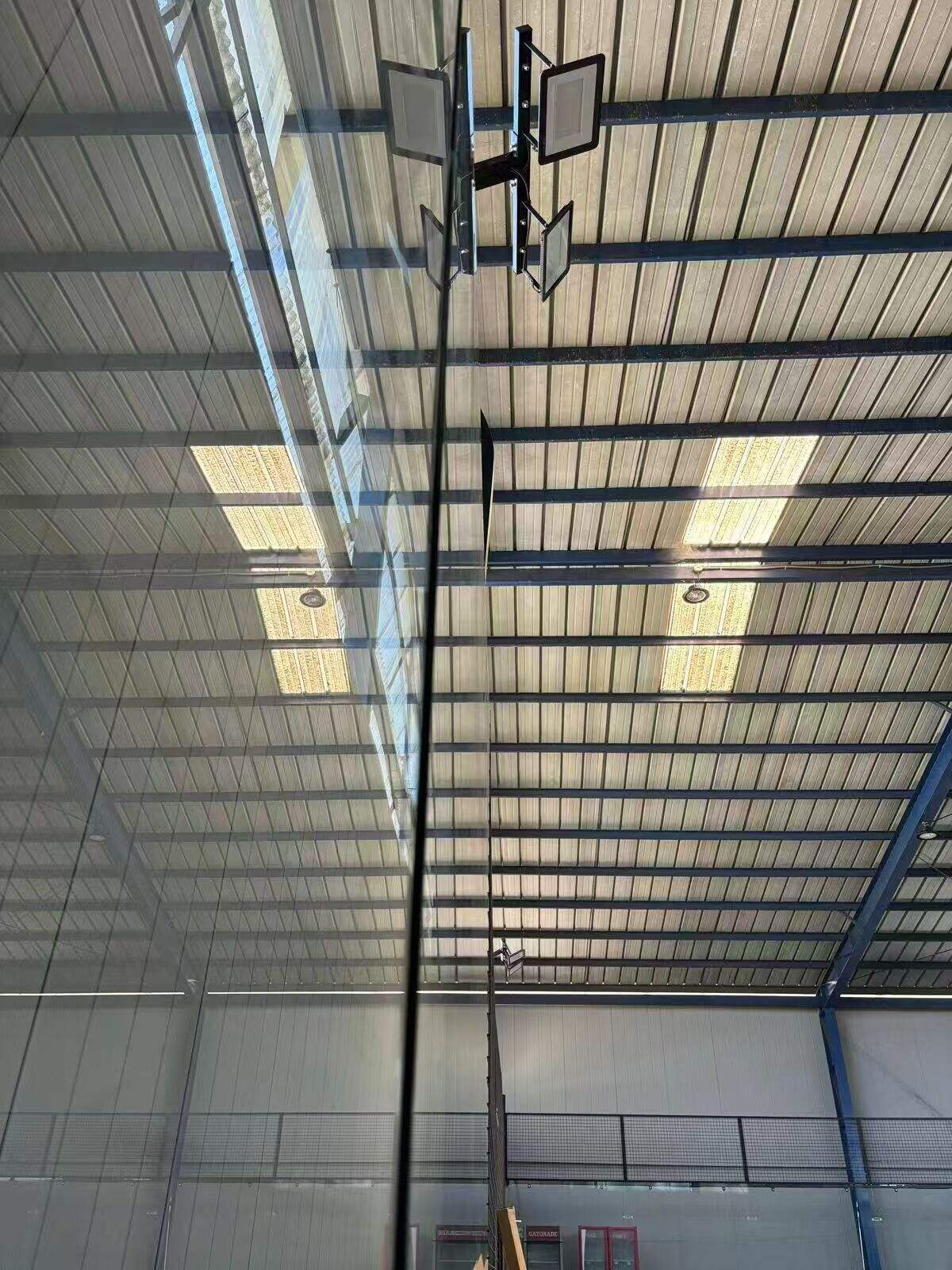As global concern for environmental protection continues to grow, industries worldwide are integrating eco-friendly practices into their products and services. SSTD PADEL, a leading company in the padel court industry, places sustainability at the core of its operations. By leveraging innovations in material selection, energy usage, and design optimization, SSTD PADEL is committed to creating high-quality, environmentally friendly padel courts that align with sustainable development goals. Here are some key green initiatives SSTD PADEL has undertaken to promote eco-friendly products in the padel industry.
1. Eco-Friendly Materials to Reduce Carbon Footprint
In constructing its padel courts, SSTD PADEL prioritizes eco-friendly, recyclable materials that minimize environmental impact. For example, the company uses recycled steel for court walls and structural supports. This choice of material offers both high strength and durability while significantly reducing resource consumption and carbon emissions during production. Recycled steel aligns with SSTD PADEL’s environmental standards by cutting down on waste and lowering the court’s carbon footprint.
Additionally, SSTD PADEL’s coatings are designed to minimize the release of volatile organic compounds (VOCs) and other harmful substances. These environmentally safer coatings ensure that the courts are safe for both the environment and players immediately after installation, helping to protect users' health and maintaining a cleaner atmosphere around the court.
Furthermore, SSTD PADEL’s artificial turf is manufactured from UV-resistant, durable eco-materials that maintain color and performance over extended use with minimal degradation. Not only does this turf minimize environmental impact during production, but it can also be fully recycled at the end of its lifespan, reducing landfill waste and conserving resources. By using these carefully selected materials, SSTD PADEL’s padel courts meet the high standards of sustainability and eco-friendliness that are essential in modern construction.
2. Innovative Pole Materials: Combining Strength and Sustainability
SSTD PADEL has also innovated in pole materials, meeting the dual demands of structural strength and environmental responsibility. Traditional pole materials often require large amounts of metal, increasing weight and installation challenges while generating substantial carbon emissions during production. SSTD PADEL addresses this by using a high-strength composite material that reduces both weight and installation complexity. This composite material is lightweight yet robust, enhancing the court’s wind and impact resistance, and requires less intensive energy to produce.
This innovative material reduces greenhouse gas emissions during its production phase, as it requires fewer resources and energy compared to traditional metals. Additionally, the composite material boasts high durability, meaning that SSTD PADEL’s courts can endure challenging outdoor conditions, such as high winds and heavy rains, while maintaining structural integrity over time. Importantly, this material is also fully recyclable, allowing the poles to be dismantled and repurposed at the end of their lifecycle, thereby reducing waste.
This material innovation not only provides clients with a strong, low-maintenance court solution but also contributes to environmental sustainability. By combining performance with eco-friendly considerations, SSTD PADEL has created a product that supports clients’ goals for high-performance and sustainable sporting facilities.

3. Energy-Efficient LED Lighting System
In terms of energy usage, SSTD PADEL has adopted an energy-efficient LED lighting system for its padel courts. Compared to traditional lighting solutions, LED lights consume less power and have a longer lifespan, which significantly reduces energy costs and the frequency of replacements, thus cutting maintenance expenses and resource use. LED lighting provides consistent, bright illumination while consuming less electricity, directly lowering the court’s overall energy consumption and carbon footprint.
The LED lighting system also incorporates a smart adjustment feature, which allows brightness levels to be tailored to the specific needs of the court at any time of day. For instance, brightness can be reduced when natural daylight is sufficient, thereby conserving energy, while brightness can be increased during nighttime or low-light conditions to maintain optimum visibility for players. This intelligent lighting solution not only improves energy efficiency but also minimizes the court’s environmental impact, enabling clients to enjoy high-quality lighting without excessive energy usage.
Through these smart energy choices, SSTD PADEL provides clients with a lighting system that optimizes both performance and sustainability, making it possible to enjoy extended hours of court use while reducing operational costs.
4. Optimized Design for Extended Product Life
SSTD PADEL’s commitment to sustainability extends to the design and manufacturing processes, where product longevity is prioritized. The company strives to extend the lifecycle of each padel court by incorporating design elements that reduce material waste and ensure long-term durability. One of the core strategies is modular design. Each component is manufactured with precision to ensure ease of installation, replacement, and maintenance. With modularity, individual parts can be easily swapped out if needed, minimizing downtime and reducing material waste.
Furthermore, SSTD PADEL’s padel courts are engineered with weather-resistant features. High-strength tempered glass and resilient structural materials can withstand extreme weather conditions, ensuring that the courts remain stable and secure for extended periods. This durability reduces the need for frequent replacements, which can consume valuable resources and energy, while maintaining the court’s safety and functionality.
By prioritizing a longer product lifespan and reducing the need for repairs and replacements, SSTD PADEL’s design approach lowers the environmental and financial costs associated with frequent maintenance and component turnover. This results in a sustainable product that aligns with the company’s mission of eco-friendly innovation.

5. Covered Courts to Mitigate Climate Impact and Improve Energy Efficiency
To address varying climate conditions, SSTD PADEL has designed padel courts with roof that provide players with an all-weather experience while enhancing energy efficiency. The covered design reduces the frequency of cleaning and maintenance required, lowering the need for water resources. The roofing material is also light-transmitting, allowing natural light to illuminate the court during the day and reducing the need for artificial lighting.
In warmer climates, the covered structure provides shade, helping to keep the court cooler and lessening the need for artificial cooling at night. This not only improves user comfort but also reduces the energy required for temperature control, which is particularly beneficial for facilities aiming to minimize their environmental impact. SSTD PADEL’s covered court solution, therefore, enhances energy efficiency and player experience, while lowering operational costs in extreme weather conditions.
6. Lifecycle Management for Sustainable Operations
SSTD PADEL extends its environmental focus beyond the design and production phases by implementing a complete lifecycle management approach. This includes support for low-maintenance materials and sustainable design to help clients minimize the environmental impact of daily operations. For example, artificial turf and tempered glass require minimal cleaning and maintenance, which reduces the need for resources and cleaning products that may harm the environment.
At the end of the court’s lifecycle, SSTD PADEL supports the dismantling and recycling of materials. The company collaborates with local recycling facilities to process used materials, thus lowering landfill contributions and promoting a circular economy. This comprehensive approach to lifecycle management enhances resource efficiency and aligns with global sustainability goals by ensuring that every aspect of the product, from installation to end-of-life disposal, is as environmentally friendly as possible.
Conclusion
SSTD PADEL has successfully developed a high-quality, eco-friendly padel court by embracing green principles and continuous technological innovation. With strategic initiatives in material selection, pole innovation, energy-efficient lighting, optimized design, and comprehensive lifecycle management, the company not only improves the product experience but also significantly reduces environmental impact. Moving forward, SSTD PADEL remains committed to further advancing sustainable technology, providing more eco-conscious padel court solutions for global sports facilities, and contributing to a greener, more sustainable future. Through these efforts, SSTD PADEL not only meets the needs of its clients but also sets a new standard for sustainable innovation in the sports construction industry.